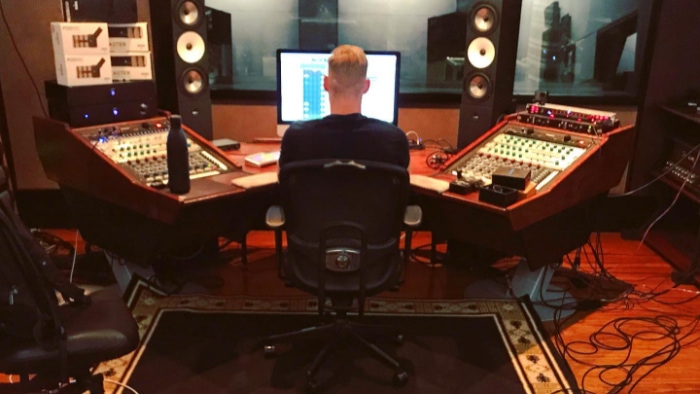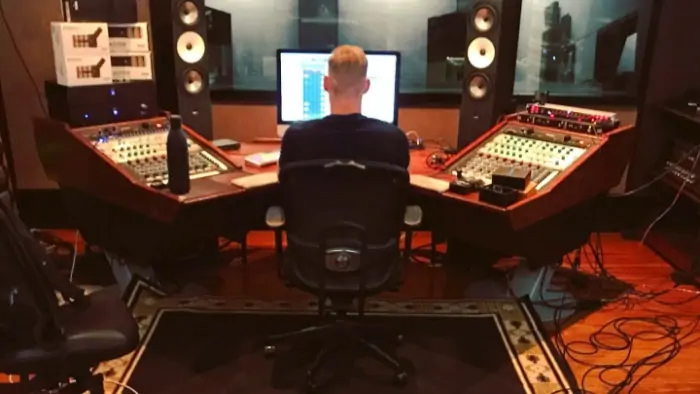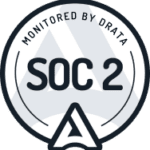
If you’ve listened to modern progressive rock and metal in the past, oh, 10 years or so, you’ve heard Forrester Savell mixing bands including Karnivool, Kikth, Birds Of Tokyo, Dead Letter Circus, Golden Guitar-winning bluegrass artist Mustered Courage, the mighty Shihad, even cabaret comedian Eddie Perfect’s Shane Warne: The Musical.
Peter: Hey, Hey, how you doing? Thank you for joining me at this early hour! I think it was [The Aristocrats bass player] Bryan Beller who told me he’d used Source-Live with you on his album Scenes From The Flood.
Forrester: Yeah! Did you interview him about the album?
Peter: Oh no, I’ve just known Bryan for years and we talk about this kinda stuff cos we’re big nerds, and I mentioned that I wanted to interview you because of this amazing ability you have to tease out the detail in really dense arrangements and instrumental configurations. Everything gets its own space with you.
Forrester: Well, the arduous, laborious mixing pays off and I’ve definitely had a lot of practice over the years doing progressive music, dense arrangements and trying to fit all the pieces in, make everything work in those complex arrangements. It does take time though. I often find mixing those sorts of things is a case of getting in there and having multiple goes at it and coming back. That’s the beauty of working at home, I guess, is that you can put a pause on something and come back to it a few days later and see how it’s feeling and see whether you can tweak a few more things.
Peter: How does this refinement take place? Do you kind of just zero in and zero in until you’ve got it? Or do you have a bag of tricks?
Forrester: Well, that’s a complicated question because it’s really different for every band. Especially when you’re not in the room with be artists. Obviously the artist has got an opinion on how their music should sound and what they want to present, so there’s always bit of back and forth with the artist in that respect. But also just in my own terms, there’s lots of ways to present something, and you might hear something in a certain way and often you get lost in these songs because there’s so much information coming at you that you. When that happens I always like to try other options or just try different things so I can find the right shape and the right presentation, I guess, for the music.
Peter: Are there ever instances where you kind of tease out something that maybe the band didn’t intend to be like a focal point? Like you find something and you’re like ‘that’s cool, I’ve got to boost that?’
Forrester: Yeah! I think that’s the beauty or the excitement. When you’re engaging a mixer, you want them to bring out something that perhaps that you haven’t thought of, or to bring another artistic pallet to the music I think. I think that’s what you should expect from a mix that when you engage a professional mixer. I’m trying to listen to all the elements that I’ve been presented. Often I’ve got a rough mix so I know what the band is trying to do and I’ll just do a good version of that, but more often than not there’s just a different way to present what they’ve provided, or they’ve just given you free reign.
Peter: Yeah. I imagine also if you’re mixing something and you’ve got the guitar player sending stuff from Sydney and the bass player sending stuff from Brisbane or whatever, you must have to be very particular in how it’s recorded. You must be getting tracks from all types of recording sources and levels.
Forrester: It does require a little bit more mixing to make it all work, but these days I think everyone’s come around to the approach of providing DIs and that sort of stuff, so there’s definitely a bit of freedom there where you can reamp and use plugins and that sort of stuff, which is great. Some bands provide DIs and almost no guidance thereafter, which is good and bad at the same time. I think it’s always fun to have that creative freedom, but also it’s also a good thing when the band has got a strong idea about what they want to sound like and they give you the finished tracks.
Peter: What are your favorite things to send your DIs through?
Forrester: Whatever the music needs really. I’ve got no favorite amps for that, and I’m a firm believer in plugins and amp sims and that sort of stuff, just because of the versatility it provides. You’ve got these programs that have all the different styles of amps and it just gives you freedom of choosing sounds. I really enjoy that side of things, but at the same time you often yourself swamped by the possibilities.
Peter: How does Source-Live fit into this process?
Forrester: I’ve had it for over five years now, maybe even before I moved up from Melbourne to the Gold Coast. There was basically a stage there where I transitioned into a lot more mixing than recording and producing. I was working with a lot of international clients so I was trying to find ways where I could satisfy the artists’ need for involvement with the mixing process and find a satisfactory way to allow them to hear the final mixes and make final adjustments. That led me to doing a bit of research and finding the Source-Live plugin, which I could just put inside my ProTools mix and then stream that out to clients.
Peter: Bryan Beller told me it was invaluable, obviously, for working on his record.
Forrester: Yeah. It gives artists a little bit more control of the final details. It’s definitely not something I encourage early on in the process!It’s not like I’d do a live mix from the beginning with it. But definitely for the final touches and tweaks, we went through on Bryan’s record and did all those sort of things with him online making suggestions and that sort of thing.
Peter: Okay, you’ve gotta tell me about working with Shihad on FVEY because, I mean, Source has a lot of New Zealand staff, and they’re a phenomenal band.
Forrester: Yeah! Now that was really cool! I’ve known the guys for years, like back when I was starting out. But they hit me up – I think it was probably Tom, I’d done a lot of work with him on other records – and he was like, ‘Alright, it’s about time you mixed a Shihad record.’ So they recorded it with Jaz Coleman [Killing Joke] as producer, and then the mixing process was in Melbourne. They are an awesome band to work with and it was a really, really good record. I really enjoyed working on that one. Evrything was huge, big room sounds on the drums. And working with Jaz was pretty crazy as well. He’s a really interesting guy.
Peter: It must be interesting to get new stuff from a band like Twelve Foot Ninja and be like ‘What the hell have they done now?’
Forrester: Yeah! We’ve done a new record. I’m not exactly sure of the timeframe of when that’s getting released, but they’re a band that’s always doing weird new and different things and they really get involved in all the creative aspects of everything they do, not just the music but all the videos and all that sort of stuff as well. But yeah, they are an endlessly interesting band to mix, especially because they’ve got so many different sounds going on, there’s so much variety in each song.
Peter: I think they’re one of those bands where like, you can spot the kids who grew up on Faith No More, even if they don’t sound like Faith No More. There’s an attitude.
Forrester: Yeah, for sure! And there’s definitely a Mr. Bungle influence on those guys.
Peter: So what’s your musical background?
Forrester: It was just mucking around at home, really. I played drums. I got into the school band playing drums, but then didn’t really carry on with the school band stuff. And playing the drums alone at home I was like, ‘There’s more to this creating music thing than just playing drums.’ So then when I bought a guitar and was making demos on a double cassette deck back in the day of cassettes. You know, recording a drum part and then throwing some guitar over the top of it. And I had a lot of time playing around with eight track sample player programs on PC. So there was always a sort of technology interest in the recording side of things. I bought a really badly built microphone from Dick Smith Electronics or whatever, put it in a box and put it next to the drum kit and use that to record with. Then I had to think about what I wanted to do once I finished school. I found this course over in Western Australia that was tapping into all that sort of stuff, recording and production. It was based in theater, so we had lots of practical experience in lots of different areas. Every month we would have to put on a production, whether it was a jazz concert or a musical theater show or another kind of theater show. It was a great experience, great exposure to all different types of audio, and it allowed me to get access to studios, basically. And I would just constantly record musicians and bands and that sort of stuff at the studios, and really focused on the music recording side of things, and live mixing as well at that time. And I think that’s what allowed me to move over to Melbourne and keep my audio career moving along as I was doing lots of live mixing, and finally I got an assistant role in a studio down in Melbourne, and then just went on from there and just kept on trying to record bands. And I’d met a lot of bands through the live mixing sort of thing. I’d approach bands and say ‘Hey, do you want to come into the studio in the evenings and down to time and do some recording?’
Peter: Courses like that are so great because you can learn some really bad habits working in isolation that you won’t notice until you get into some kind of a jam or until someone with experience pulls you up on it.
Forrester: When I started around 2000, there wasn’t really a home studio situation. That was right before I remember buying the very first M-Box after I’d finished the course. And that allowed me to delve into the home recording things. I couldn’t do drums but I could put a 57 in front of a guitar cab. I could put a vocal mic up. So that started me in that sort of guerrilla recording, I guess: I’d just go around to musicians houses, and we’d do the drums elsewhere but then I’d do everything else in ProTools on my laptop with the M-Box. And that got me started. But in terms of the course, the course gave me a lot of practical, foundational knowledge, more on audio signal and audio paths and using mixers and that sort of thing, as opposed to any sort of production techniques or anything like that. There wasn’t enough on the internet yet to really learn anything, so everything I learned was taught on the job because I taught myself, or I learned through working at studios and that sort of thing. I guess I came from an era where there wasn’t a lot of bad information necessarily, because we were actually learning on the job in a practical sense, so you’ve been taught by guys who’ve been doing it for 20 years before you.
Peter: Well thanks so thanks so much for your time. This has been really fun to pick your brain and get some of your perspective and stuff. Cause I mean, everyone who listens to this kind of music knows who you are and knows your work, and you’ve got a lot of fans out there.
Forrester: Yeah! I find it quite interesting when I stop and think back to all the great bands I’ve worked with. There are definitely a few boxes ticked there in terms of bands that I love. Thanks Peter. See ya.
More info about Forrester:

